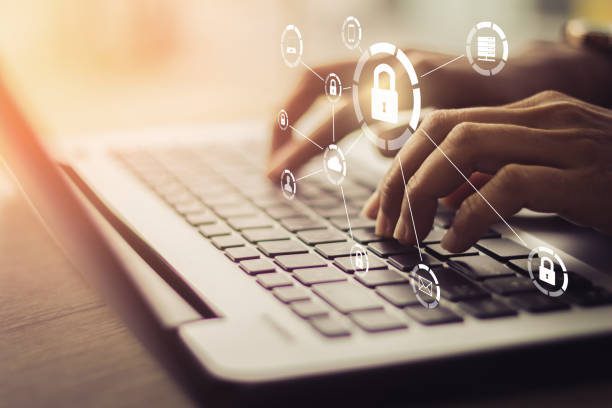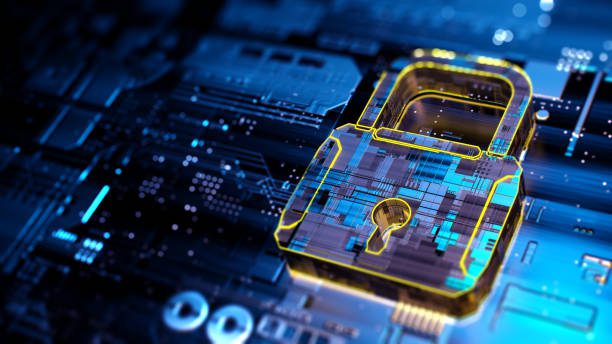Digital advancement around small or large corporations, organizations, and even governments depend on computerized systems to manage their daily tasks and thus make cybersecurity the main focus to protect data from various online attacks. Many lessons have been learned across the board for everyone, including cybersecurity leaders and experts by looking back on a year of unprecedented uncertainty.

The sudden change in working environments meant millions of employees suddenly had to work from home. This has put a huge strain on access to IT systems. On the other hand, cybercriminals are continuously searching for ways to work around security barriers. So, it is less surprising that cases of cyber attacks are on the rise. Due to advanced technologies, attackers are becoming creative by finding new methods to exploit technology users by accessing confidential data, networks, and passwords.
IT departments and web development companies were forced to accelerate their working plans and roll out new processes and systems rapidly to support the new norm. Eighty-two percent of enterprises changed their cybersecurity in 2020. In the coming year ahead, cybersecurity professionals must secure this new landscape. They should ensure that the foundation is solid enough to build a profitable future.
To sum up all, this pandemic has made cybersecurity a top priority for both businesses and consumers who were more digitally dependent than ever. So, you should remember that how vital it is to talk about cybersecurity more openly and thus encourage a greater understanding of the threats and best preventative strategies. Here I am going to discuss some key cybersecurity trends to watch out for in 2021.
User Awareness:
As cybersecurity becomes more vital each day, businesses and organizations take major steps to enhance their security measures. For many organizations, cybersecurity awareness is important to avoid costly identity theft and network hacks that can destroy any company or individual’s reputation. Now many web development companies consider it important to increase the capabilities of their IT personnel via seminars and the like apart from implementing firewalls and sophisticated IT protocols. What moves cybersecurity awareness forward is the growing number of people unaware of most cyberattack types and methods. A report by Infosec shows that about 96% of the people in the world cannot identify a phishing email, while 1 in 20 people click such emails, thus, falling prey to cyberattacks. These day’s cybercriminals resort to more advanced and high-tech types of phishing and malware infections.
On the other hand, cybersecurity awareness could help prevent the charge of threats and attacks. Some web development companies have started to implement the combined use of the web- and classroom-based methods and visual aids for cybersecurity awareness training and promotions. On top of this, web development companies now make policies focusing on how employees handle and share confidential corporate data.
Rise of Automotive Hacking:
The first and main IT security trend in 2021 is going to be the excessive rise of automotive hacking. As we all know that, modern vehicles nowadays equipped with automated software. It provides seamless connectivity for drivers in cruise control, engine timing, door lock, airbags, and advanced systems for driver assistance. You can use Bluetooth and Wi-Fi technologies to communicate in these vehicles. It also opens vehicles to several vulnerabilities or threats from hackers. Taking control of the vehicle is expected to increase in 2021 as cybersecurity trends with the increase of automated vehicles.
The evolving threat:
One of the major impacts of remote working will be more organizations depending on the Internet of things devices for measuring and monitoring processes. With the massive expansion of the Internet of things, along with the rollout of 5G, cyber attackers will like the increasing number of opportunities to compromise systems and networks, as even more devices become connected to the internet. IT industry still needs to adequately segregate insecure internet of things and 5G-enabled devices from the rest of their network. In the medical field, for example, wearable Internet of things sensors enable remote patient monitoring, so insecure devices could allow the misuse of sensitive patient data.
Securing the Remote Workforce:
The slow movement toward remote working increased enormously in 2020 as offices closed massively expands the potential attack surface of most businesses. Also, the use of VPN and remote desktop protocols soared, leading to a worrying 126% increase in exposed RDP endpoints, according to the Department of Infrastructure Security Agency. In this bad situation to maintain business continuity, security took a back seat. This thing should be addressed urgently in the year. In 2021 we are seeing businesses assessing their systems, analyzing what’s essential for them to scale securely, and charging infrastructure to support the remote workforce. So policies must be revised and modernized. In 2021 you can expect growth in, desktop virtualization, enterprise VPN, endpoint security, endpoint detection and response, and cloud access security broker’s solutions.
5G Sector:

5G is regarded as the next generation of internet and mobile connectivity. It is new and complex. It will have a huge impact on telecommunication. It will provide a platform for technological advances in areas such as defense facilities, intelligent power grids, and smart cities. 5G needs a higher level of security. And hackers are already working hard to find vulnerabilities and blind spots to steal information. Additionally, we have already seen large-scale DDoS attacks or challenges in protecting complex networks of connected devices. It can result in a whole network crashing if one device is hacked. Maybe it’s the best time for companies to adopt zero-trust network models.
Integrating AI with Cyber Security:

With artificial intelligence being introduced in all market segments, this technology with the use of machine learning has brought tremendous changes in cybersecurity. Artificial intelligence has been supreme in developing automated security systems, natural language processing, face detection, and automatic threat detection. On the other hand, it can be used to create smart malware and attacks to bypass the latest security protocols in controlling data. Artificial intelligence-enabled threat detection systems can predict new attacks and notify teams of any data leakage instantly, making it the next cybersecurity trend in 2021.
Mobile is the New Target:
Cybersecurity industry trends offer a considerable increase of 60 percent for mobile banking malware or attacks in 2019, making our smart devices a potential prospect for hackers in coming years. All our pictures, financial transactions, emails, and messages possess more dangers to individuals. Smartphone malware may capture the attention of cybersecurity trends in 2021.
Ransomware Cyberattack Threats:

The bitter reality of the COVID-19 pandemic is the continuously-growing unemployment around the world. It has developed concern over the distribution of wealth. And hackers are doing their best to harm corporate entities through cyberattacks. Data by 95 firms shows that 71% of breaches in 2020 are financially motivated, with 51% involving hands-on hacking, not autonomous malware. This shows that an individual on the other end might actively attempt to breach your servers and database in order to give financial harm.
Ransomware attacks are cyber-attacks that involve holding a business’ database hostage in exchange for cryptocurrency or some other form of compensation. These are far too common in 2020. The ideal way to avoid them going forward is to educate your staff on how to handle emails and files coming from unknown sources. Any single mishandled file downloaded to your organization’s intranet can give severe harm not only to your internal communication but the business’ financial wellbeing.
Cloud Security:
Today many businesses and organizations are migrating to the cloud with the help of the best cloud management software solutions. However, It is a bitter reality that, most cloud services right now do not provide secure encryption, authentication, and audit logging. Some cloud services also fail to isolate user data from other tenants sharing space in the cloud. Therefore, cybersecurity professionals see the need to enhance cloud security.
Poor encryption of cloud security can lead to cyber criminals bypassing internal policies that save and protect sensitive information in the cloud database. Predictive security setting is becoming very useful for finding threats before attackers start their move. These security measures can pinpoint attacks that pass through other endpoint security. As a result, many organizations are planning predictive security cloud, with the market gaining a 260% ROI for over three years now (Forrester, 2019). Although many cloud applications such as Google or Microsoft are well-packed with security from their end still, it’s the user end that works as a great source for erroneous errors, malicious software, and phishing attacks.
Insider Threats:
It is a well-known fact that human error is still one of the primary reasons for the data breach. Any intentional loophole can take down a whole organization with millions of stolen data. Report by Verizon in data breach provides strategic insights on cybersecurity trends that the employees directly or indirectly made 33 percent of total attacks. So make sure you offer more awareness within premises to safeguard data in every possible way.